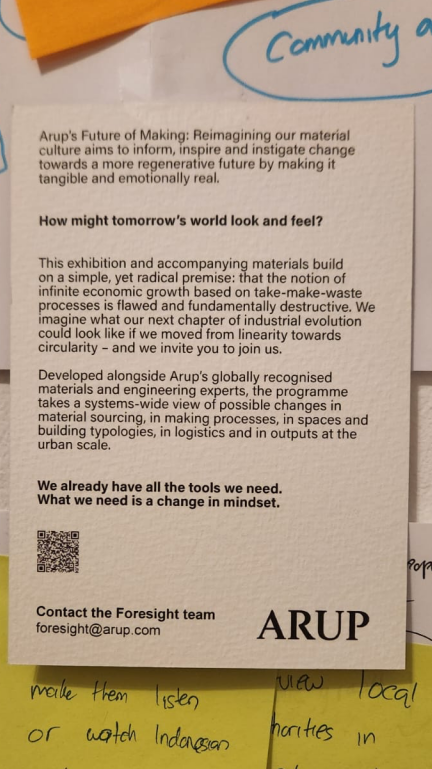And it answered me with this;
“If you love Brighton and you’re looking for other cities with a similar vibe, here are a few cities—both in the UK and internationally—that share elements like creativity, beachside culture, inclusive communities, indie spirit, and a strong arts or subculture scene:
In the UK
- Bristol
- Creative, indie music and art scene, progressive values, and youthful energy.
- Feels like Brighton without the beach, but with even more street art (hello, Banksy).
- Margate
- A seaside town turned hip artsy haven, with galleries (like Turner Contemporary), retro charm, and growing creative communities.
- Hastings
- A mix of vintage, grunge, and sea breeze. Similar to Brighton but a bit quieter and grittier.
- Lewes (very close to Brighton)
- Quaint, historic, very artsy, with a strong local identity and political activism vibe.
- St Ives (Cornwall)
- Coastal, arty, and beautiful. More laid-back and small-town, but shares the artsy-meets-nature mood.
International Cities
- Portland, Oregon (USA)
- Progressive, weird, creative, full of independent cafes and shops. Like Brighton, but inland and woodsy.
- Melbourne (Australia)
- Art, coffee, culture, LGBTQ+ inclusive, and by the ocean (in some suburbs). A Brighton of the Southern Hemisphere.
- Barcelona (Spain)
- Beach meets culture meets nightlife. Big city version of Brighton with a Mediterranean twist.
- Copenhagen (Denmark)
- Clean, design-focused, liberal, bike-friendly. Feels like if Brighton grew up and got really into Scandinavian minimalism.
- Amsterdam (Netherlands)
- Canal-side instead of seaside, but super free-spirited, diverse, and youthful with strong subcultural vibes.
Why It Matters?

I went to Brighton with my friends, longing for a beautiful natural vitamin D after long season of winter. That was my first time actually, and I was so excited with all of the blue and the blasting array of colors that stimulated my happiness during my visit.

My friends and I went to visit Lucy and Yak on our way back from the beach. The boutique was impeccable with a lot of beautiful prints, colorful dungarees and summer outfits that will shines bright on the beach. But what caught me in the eye was, they also accept their own second hand products from their customer to be sold again. Because apparently they adopted circular economy or regenerative approach to their concept.

Source: Lucy and Yak Website
After a long beach walk, strolling around the captivating Brighton Pier, hopping to one and another colorful gift shops and spending pennies for trinkets what-nots later, I went home to arrange my gifts from Brighton into my gift box. While searching through my postcards from my previous trip, popped up a ‘postcard’ from my previous Arup visit with MA Innovation Management students two weeks before;

Such a coincidence (or maybe not) that it unfolds my deepest thought in my subconscious. The generation of tomorrow has moved from sustainability to more radical concept of regenerative, which today people are honing the knowledge on creating more sustainable materials. But however, we also need the rotors, the machines, the enabler, the people to promote this narrative. And I believe the creative community, especially those rooted in subcultures, hobbies, music, and the arts, can play a transformative role in promoting a regenerative future within urban development.

Source: https://www.thersa.org/regenerative-futures/
Imagine how a creative city and vibrant city like Brighton can works because many creative store concepts, creative community and youth are running the city, and it makes you want to go back more or find any similar cities like Brighton.
As stated by smartcitiesdive.com:
“At first, it might be odd to imagine that a city may be dependant on something so intangible as creativity. In fact, it is not so much the creativity itself, but the reputation of creativity which it invokes. The entire character and physique of the city is hinged and perpetuated by this reputation. Without it, Brighton would find itself having to refocus and reorganise. A pier and pavillion are not, and haven’t been for some time, enough. Margate showed tourism is not an infinite resource, but luckily Brighton has already built its defences.”
And going back to the ChatGPT prompt above, I realized none of the cities above are mentioning any cities in Indonesia, not even Jakarta, not even Bali.
Regardless that Indonesia has (according to Chat*PT again):
- Thousands of unique cultural expressions across 17,000+ islands
- 700+ languages
- 3,000+ dances
- Hundreds of songs and music styles
None of these would contribute to the country’s growth or to the narrative.
Therefore, it unlocked my question “Can a creative community contributes to build regenerative future of urban cities like Jakarta? If it does, can the progressive movement starts from the creative community?”
Because, given that the creative community involved in the participative action to develop their cities, the narrative of the city can be altered and the future of the cities can be more progressive. This idea celebrates how everyday people shape urban futures through creative action, echoing the populist spirit of reclaiming power for the people.
Leave a Reply